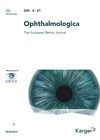
Journal Reviews archive for June 2025
Randomised controlled trial of CAM training vs occlusion for amblyopia therapy
The main aim of this study was to compare the effect of Cambridge vision stimulator (CAM) therapy with passive occlusion in the management of unilateral amblyopia. This was an randomised control trial (RCT) with two groups; group 1 with CAM...
Correlations of fusional convergence with suppression depth in control of exotropia
This study was undertaken to investigate the differences in fusional convergence during refusion in patients with intermittent exotropia based on suppression depth and exotropia control. This was a cross-sectional study of 25 patients; 15 female and 10 male aged mean...
Improvements in balance and postural control after strabismus surgery
The authors sought to investigate the effect of surgical correction of strabismus on dynamic balance and postural stability. They recruited 27 children (15 female, 12 male) of which 17 were esotropia and 10 exotropia (including eight intermittent types), aged 7–12...
Myectomy with or without proximal end tucking for inferior oblique overaction
This study aimed to compare the outcomes and impact of inferior oblique muscle myectomy with and without tucking the proximal end of the muscle into Tenons capsule in two surgical groups as a treatment for inferior oblique overaction. Tucking the...
Choroideremia in women
The authors report a questionnaire-based study of female carriers of choroideremia, an X-linked inherited chorioretinal dystrophy. As an X-linked condition the full clinical features are predominantly seen in men but a proportion of women suffer some morbidity, likely due to...
Macular characteristics in unilateral idiopathic FTMH and fellow eyes
This retrospective observational study, conducted at a single site, aimed to compare characteristics of the macular structure and foveal pit in unilateral full-thickness macular hole (FTMH) and healthy fellow eyes. Full-thickness macular holes were further classified into three categories: (1)...







